Are you looking to give your walls a fresh new look but unsure whether to go with plastering or skim coating?
We will explore the differences between these two popular wall finishing techniques, covering the purpose, application process, materials used, and durability.
If you’re wondering which one is right for your project, keep reading to find out!
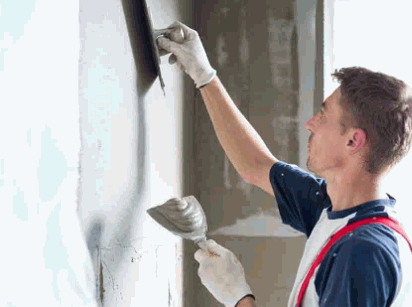
What Is Plastering?
Plastering is a technique used to create a smooth, durable surface on walls and ceilings, commonly employed in both interior and exterior construction projects.
It plays a crucial role in providing a protective layer, enhancing the structural integrity of the walls, and improving the overall aesthetics of a building.
The process of plastering involves meticulous steps such as meticulously preparing the substrate by ensuring it is clean, dry, and free from any debris or loose particles. After the basecoat is applied, which serves as a bonding agent, the skilled plasterer meticulously adds the topcoat to achieve the desired texture and finish, ranging from smooth to textured or decorative patterns.
Plastering not only beautifies surfaces but also helps in repairing cracks, holes, uneven surfaces, and water damage, making it an essential aspect of renovations and maintenance projects.
Gain insights: What Are The Steps For Plastering A Wall
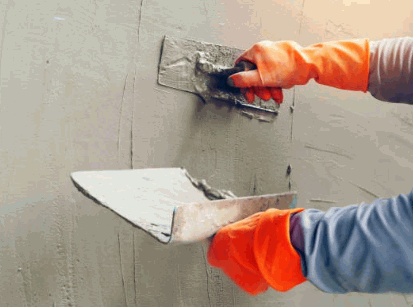
What Are The Different Types Of Plastering?
Various types of plastering techniques exist, each utilizing different materials, application methods, and layering processes to achieve the desired finish on a substrate.
- Traditional plaster mix applications involve combining lime, sand, and water to create a paste that is then applied in multiple layers.
- Joint compound or mud, on the other hand, is commonly used for drywall finishing to smooth out seams and imperfections.
Specialized tools like trowels are essential for spreading and smoothing the plaster evenly. The layering process typically includes applying a basecoat for structural integrity followed by a topcoat for a polished surface. These layers contribute to the overall smoothness, texture, and adhesion of the plaster to the surface, ensuring a durable and aesthetically pleasing finish.
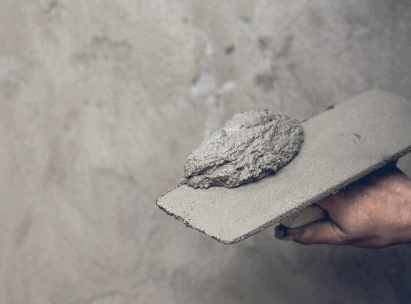
What Is Skim Coating?
Skim coating is a technique used to achieve a smooth, uniform finish on walls or ceilings by applying a thin layer of plaster or joint compound over the surface.
This method is particularly beneficial for hiding imperfections, such as bumps, cracks, or uneven textures, creating a flawless canvas for painting or wallpapering. The application process involves spreading the skim coat evenly using a trowel or drywall knife, followed by sanding to achieve the desired level of smoothness. Unlike traditional plastering methods that may require multiple layers and drying time, skim coating offers a quicker turnaround with its single, fine-layer approach. It allows for versatility in creating different textures and finishes, whether opting for a polished sheen or a matte appearance.
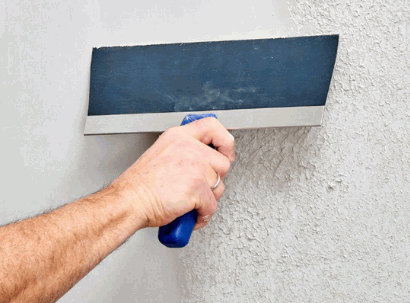
What Are The Different Types Of Skim Coating?
Skim coating encompasses various methods and materials, offering different techniques to achieve specific textures, paintability, and surface smoothness.
- Joint compound and mud are commonly used materials for skim coating, each offering unique benefits depending on the desired outcome.
- The application process involves applying a thin layer of the chosen material over the targeted surface, utilizing tools like trowels and drywall knives to spread and smooth the coating evenly.
- Creating different textures, such as orange peel or smooth finish, requires varying application methods, including stippling or feathering.
- Before painting, the surface must be adequately prepped by sanding and priming to ensure optimal adhesion and a flawless final result.
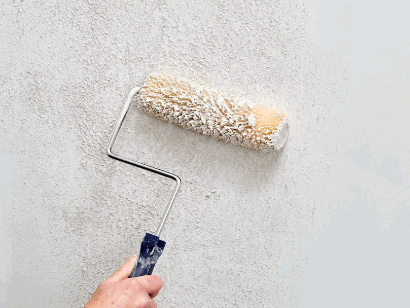
What Is The Difference Between Plastering And Skim Coating?
Understanding the difference between plastering and skim coating involves analyzing aspects such as their purpose, application process, materials, thickness, durability, and skill level required for each technique.
Plastering is typically used as a more structural application, involving the creation of a strong base layer to support wall finishes. This process usually requires the application of multiple coats of plaster mix, with each layer needing to dry thoroughly before the next one is added.
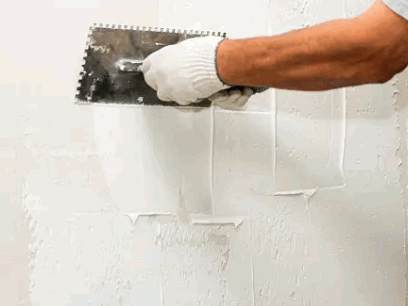
On the other hand, skim coating, also known as ‘topping,’ involves applying a thin layer of joint compound or skim coat to smooth out imperfections on walls or ceilings. Skim coating is more about refining the surface rather than providing structural support, making it ideal for achieving a clean and even finish.
In terms of material, plastering primarily utilizes a plaster mix, while skim coating involves joint compounds or specialized skim coat materials. The thickness of plastering can vary significantly depending on the desired finish, often ranging from 1/4 inch to several inches. Skim coating, conversely, focuses on achieving a smooth surface with a very thin layer, usually around 1/16 to 1/8 inch thick.
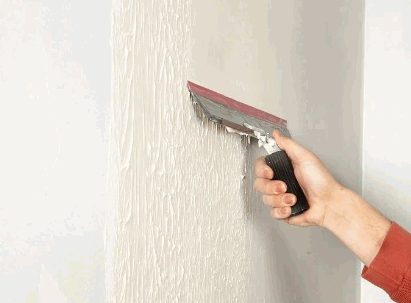
When it comes to drying time, plastering can take longer due to the multiple layers involved, whereas skim coating is relatively quicker to dry. In terms of cost, plastering may be more expensive due to the materials and labor involved in the process, while skim coating is generally considered a more cost-effective option.
Durability-wise, plastering tends to be more robust and resistant to wear and tear over time compared to skim coating. Both techniques can provide long-lasting results when properly maintained.
Skill level plays a significant role in choosing between plastering and skim coating. Plastering requires a higher level of expertise and experience due to the intricate application process and structural considerations involved. In contrast, skim coating can be more DIY-friendly, as it involves a simpler application method that can be mastered with practice.
Maintenance for plastered surfaces may involve occasional repairs due to their solid nature, while skim-coated surfaces may require periodic touch-ups to maintain their smooth appearance. By understanding these distinctions, individuals can make informed decisions on whether plastering or skim coating is the more suitable technique for their specific construction or renovation needs.
Purpose
The primary difference between plastering and skim coating lies in their purpose within the realm of construction and repair work.
- Plastering is typically utilized to create a strong, textured surface that adds both durability and aesthetic appeal to walls and ceilings. It involves applying multiple layers of a mixture, often composed of materials like sand, cement, and lime, to establish a solid foundation.
- On the other hand, skim coating serves the purpose of achieving a smooth and flawless finish on surfaces by applying a thin layer of finishing compound. The goal of skim coating is to provide a clean, polished look while covering imperfections such as bumps, dents, or other irregularities.
Application Process
The application process of plastering and skim coating differs in terms of techniques employed and the adhesion to the surface being treated.
- Plastering typically involves applying multiple layers of a plaster mix using a trowel, with each layer allowing for adhesion and building up the desired thickness. The skilled plasterer must ensure each layer is level and smooth before adding the next one.
- In contrast, skim coating is a process where a thin layer of plaster or joint compound is applied evenly over the surface to create a smooth and flawless finish. The key to successful skim coating lies in achieving a uniform thickness across the entire surface, resulting in a polished appearance.
While both techniques aim to enhance the surface, plastering provides a thicker, more durable coating due to its multiple layers, whereas skim coating offers a smoother look with less thickness but still provides adequate adhesion for longevity.
Materials Used
Plastering and skim coating utilize different materials, such as plaster mix for traditional plastering and joint compound or mud for skim coating.
These materials play a crucial role in the overall outcome of the application process. Plaster mix typically consists of lime, sand, and water, offering a durable and long-lasting finish that is ideal for interior walls and ceilings.
On the other hand, joint compound or mud, made of gypsum powder and additives, is known for its smooth texture, making it perfect for achieving a flawless look on drywall surfaces.
Consideration of material costs and availability is essential, as plaster mix may be more expensive but offers a timeless look, while joint compound is more affordable and readily accessible for quick skim coating projects.
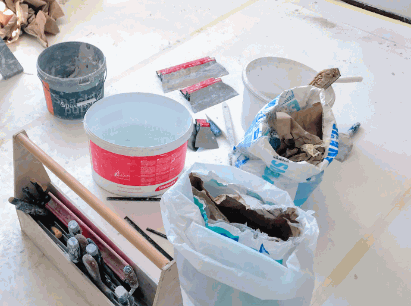
Thickness
The thickness of the applied layer is a key differentiator between plastering and skim coating, influencing the overall leveling and smoothness of the treated surface.
In plastering, the layering process typically involves applying a basecoat followed by a topcoat to achieve a durable and textured finish. The thickness of each layer is crucial in ensuring structural integrity and aesthetic appeal.
On the other hand, skim coating focuses on creating a thin, smooth surface by applying a single, even layer of plaster or joint compound. The level of thickness in skim coating is minimal compared to traditional plastering, emphasizing the need for precision and skill to achieve a flawless result.
Drying Time
Drying time is a critical factor that separates plastering and skim coating, affecting adhesion strength and the paintability of the treated surface.
- For plastering, the drying time can vary depending on the materials used, with traditional lime-based plaster typically taking longer to dry compared to modern gypsum-based alternatives. Thicker plaster layers will also require more time to dry thoroughly to ensure a strong bond with the substrate.
- Skim coating, on the other hand, generally dries faster due to its thinner application.
Proper drying times are crucial as they not only affect the durability of the finish but also play a significant role in preparing the surface for subsequent decorating or priming, ultimately impacting the overall quality of the final paint job.
Cost
Cost considerations play a significant role in deciding between plastering and skim coating, with each technique offering distinct advantages in terms of cost-effectiveness and material expenses.
- Plastering, while initially more expensive due to the higher material costs and labor-intensive application process, is often seen as a more durable option in the long run, requiring minimal maintenance over time.
- On the other hand, skim coating may present lower upfront costs and quicker installation times, but it may require more frequent touch-ups and repairs, impacting the overall long-term expenses.
When weighing these factors, it’s essential to consider not just the immediate costs but also the lifespan and maintenance requirements of each technique to make an informed decision that aligns with the project’s budget and goals.
Durability
Durability is a key factor to weigh when deciding between plastering and skim coating, impacting the longevity and resilience of the treated surface against wear and tear.
Skim coating, while providing a smoother finish, is generally thinner than plastering. This thin layer, however, can make it more susceptible to minor dents and scratches compared to the thicker plaster application.
Plastering, on the other hand, offers greater structural strength due to its thicker composition, making it a preferred choice for areas prone to impact or heavy use.
When considering maintenance requirements, plastering often requires less frequent touch-ups or repairs, ultimately reducing long-term maintenance costs and ensuring a visually appealing surface for years to come.
Finish
The finish achieved through plastering or skim coating differs in terms of texture, smoothness, and overall aesthetic appeal, influencing the visual impact of the treated surface.
Plastering results in a more traditional, rugged texture with subtle imperfections that add character to a room, creating a sense of depth and history within the space.
On the other hand, the skim coating offers a smoother, more modern finish that is sleek and seamless, ideal for achieving a contemporary or minimalist look.
The choice between these techniques is crucial as it can completely transform the ambiance of a room, with plastering lending a sense of warmth and authenticity while skim coating provides a clean, polished appearance that enhances the overall style and sophistication of the area.
Skill Level Required
The skill level required for plastering and skim coating varies, with plastering often demanding more expertise in skilled trades compared to the DIY-friendly nature of skim coating for home improvement projects.
Plastering is a craft that involves intricate techniques and a deep understanding of materials, making it essential for professionals to achieve flawless results. From preparing the substrate to applying multiple layers of plaster with precision, plastering requires honed skills and attention to detail.
On the other hand, skim coating, while still requiring a level of finesse, is more forgiving and can be learned by enthusiasts willing to invest time in practicing and perfecting the technique. Matching the complexity of these techniques with the appropriate skill level is crucial to ensure successful outcomes in construction or renovation projects.
Maintenance
Maintenance considerations play a crucial role in deciding between plastering and skim coating, impacting the ease of repairs, renovation requirements, and potential reliance on professional services.
- When it comes to the maintenance aspects of plastering, one must consider the long-term durability and potential challenges in repairing cracks or damages that may occur over time. Due to the solid nature of plaster, repairs often require professional intervention to ensure a seamless finish.
- On the other hand, skim coating offers a more DIY-friendly maintenance approach, making it easier for homeowners to handle minor touch-ups or adjustments without the need for specialized skills. This flexibility in maintenance can be particularly beneficial for those looking to make quick and cost-effective surface improvements.
Which One Should You Choose?
When deciding between plastering and skim coating, several factors need to be considered to align with the requirements of your construction or renovation project.
Industry standards play a crucial role in determining the suitability of each technique for different surfaces. Plastering, for example, is known for its durability and can be ideal for high-traffic areas. On the other hand, skim coating offers a smoother finish and is often preferred for achieving a modern, sleek look.
Material preferences, such as the type of wall or ceiling being worked on, also weigh in on the decision-making process. Aesthetic goals, whether it’s restoring a vintage charm or creating a contemporary ambiance, will influence the choice between these two methods. Budget constraints should not be overlooked as they impact not only the initial cost but also long-term maintenance expenses.
Factors To Consider Before Choosing Plastering Or Skim Coating
Before opting for plastering or skim coating, evaluating factors such as the desired finish, trade expertise, stucco compatibility, surface leveling, and adhesion strength is crucial.
Each of these factors plays a significant role in determining the success and long-term durability of the chosen technique. The desired finish texture influences the overall aesthetic appeal of the surface, whether it’s a smooth or textured look.
Trade preferences for skilled labor can impact the quality of the application process and the final outcome. Consideration of stucco or other surfaces’ compatibility is essential for ensuring proper adhesion and seamless integration of materials.
Surface leveling requirements help create a uniform and flawless surface, while adhesion strength determines the durability and longevity of the finish.

